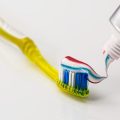So, picture this scenario: you’re going about your day, minding your own business, when all of a sudden, the excruciating pain hits. Your toothache has reached an unbearable level, and you realize that you need emergency dental care. Panic sets in because, let’s face it, dental procedures can be anxiety-inducing even under normal circumstances. But here’s the real question that’s on your mind: do dentists offer sedation options for emergency procedures? Well, fear not, because in this article, we’re going to explore the importance of sedation in emergency dental care and why it could be your saving grace in times of dental distress. If you’re in need of emergency dental procedures, you may be wondering what sedation options are available to help manage pain and anxiety during your treatment. Sedation can greatly enhance the comfort and ease of dental procedures, making them more bearable for patients who may have dental phobias or complex dental issues. In this article, we will explore the different sedation options for emergency dental procedures, discuss their benefits and limitations, and provide insights on how to choose the right sedation option for your specific needs.
Oral Sedation
Oral sedation involves taking medication by mouth to induce a relaxed state during dental procedures. This form of sedation is typically administered in the form of a pill or liquid, which is absorbed into your bloodstream and produces a calming effect. Oral sedation is suitable for emergency dental procedures as it can help manage anxiety and alleviate discomfort.
One of the key advantages of oral sedation is its ease of administration. You simply take the prescribed medication before your dental appointment and it gradually takes effect. This method of sedation is also convenient for patients who may feel apprehensive about the use of needles or invasive procedures.
However, it is important to note that oral sedation may not be suitable for all patients or all types of emergency dental procedures. The level of sedation achieved with oral medications can vary, and it may not be strong enough for those with severe dental anxiety or complex procedures that require a higher level of sedation. Additionally, it is crucial to provide your dentist with a detailed medical history to ensure that oral sedation is safe for you and to avoid any potential drug interactions.
Inhalation Sedation
Inhalation sedation, also known as nitrous oxide or laughing gas, is another commonly used sedation option for emergency dental procedures. This form of sedation involves breathing in a mixture of nitrous oxide and oxygen through a mask placed over your nose. Inhalation sedation induces a state of relaxation and euphoria, allowing the patient to remain conscious and responsive during the procedure.
Inhalation sedation is suitable for emergency dental procedures as it provides rapid onset and recovery times, allowing for efficient treatment. The level of sedation can also be adjusted to meet the patient’s needs throughout the procedure. This option is particularly beneficial for patients with a mild to moderate level of dental anxiety or for procedures that do not require deep sedation.
One of the limitations of inhalation sedation is that it may not be sufficient for patients with severe dental phobias or for complex procedures that may require a higher level of sedation. It is also important to consider any allergies or sensitivities you may have to certain gases or medications used in inhalation sedation. Your dentist will assess your medical history and evaluate whether this form of sedation is appropriate for you.
Intravenous Sedation
Intravenous (IV) sedation involves the administration of sedative medications directly into your bloodstream through an IV line. This form of sedation induces a state of deep relaxation and can provide a higher level of sedation compared to oral or inhalation options. IV sedation is suitable for emergency dental procedures that are more complex or invasive, as it allows the dentist to have greater control over the level of sedation.
Advantages of IV sedation include the ability to achieve a deeper state of sedation for patients with severe dental anxiety or for procedures that may be uncomfortable or lengthy. IV sedation also enables the dentist to adjust the level of sedation throughout the procedure to ensure your comfort. Moreover, IV sedation typically results in a quicker recovery time compared to general anesthesia.
However, IV sedation may not be suitable for everyone or all types of emergency dental procedures. Patients with certain medical conditions or allergies may not be eligible for IV sedation. Additionally, you may experience some post-sedation effects such as drowsiness or temporary memory loss, and it is important to arrange transportation following your dental appointment if you choose this option.
General Anesthesia
General anesthesia is the most profound form of sedation in dentistry and involves the use of medication to induce a state of deep unconsciousness. It is typically reserved for highly complex or invasive emergency dental procedures, or for patients who have specific medical conditions that require general anesthesia.
Under general anesthesia, you will be completely asleep and unaware of the dental procedure. This allows your dentist to perform extensive treatments without causing pain or discomfort. General anesthesia is administered by an anesthesiologist who closely monitors your vital signs throughout the procedure.
While general anesthesia can be highly effective in ensuring a pain-free and comfortable dental experience for patients with complex dental issues or severe anxiety, it is not without risks and limitations. The use of general anesthesia carries inherent risks, including possible allergic reactions, breathing difficulties, or complications related to the administration of anesthesia. It also requires a longer recovery period compared to other sedation options, and you will need to be accompanied by a responsible adult to drive you home after the procedure.
Process of Providing Sedation in Emergency Dental Procedures
The process of providing sedation during emergency dental procedures typically involves several key steps. Firstly, an initial assessment will be conducted to evaluate your medical history, dental condition, and level of anxiety. This will help your dentist determine the most appropriate sedation option for you.
Once the sedation option is chosen, informed consent will be obtained. Your dentist will explain the benefits, risks, and alternatives to the selected sedation method, and address any questions or concerns you may have. It is important to fully understand the procedure and any potential risks before giving your consent.
During the procedure, you will be closely monitored by trained dental professionals to ensure your safety and well-being. Vital signs such as blood pressure, heart rate, and oxygen levels will be continuously monitored throughout the sedation and dental treatment.
After the procedure, you will be provided with post-procedural care instructions. This may include recommendations for pain management, rest and recovery, and any special dietary considerations. It is important to carefully follow these instructions to optimize your healing and minimize any potential complications.
Choosing the Right Sedation Option
Choosing the right sedation option for your emergency dental procedure requires a collaborative approach between you and your dentist. Your dentist will evaluate your medical history, dental condition, and level of anxiety to determine the most suitable sedation option for you.
During your consultation, your dentist will discuss the available sedation options and their advantages and limitations. They will also take into consideration your personal preferences and level of comfort with the various sedation methods. It is important to openly communicate your concerns and expectations to ensure that your dental experience meets your individual needs.
It is also essential for your dentist to perform a risk assessment, considering any potential complications or contraindications for the different sedation options. If your emergency dental procedure requires a higher level of sedation, your dentist may collaborate with an anesthesiologist to ensure your safety and well-being throughout the procedure.
Cost and Insurance Coverage
The cost of sedation for emergency dental procedures can vary depending on the type of sedation used and the complexity of your treatment. It is important to discuss the potential costs with your dentist before the procedure to avoid any surprises.
Determining insurance coverage for sedation can be complex, as it often depends on the specific details of your insurance plan. Some insurance plans may cover a portion or all of the sedation costs for emergency dental procedures, while others may not provide any coverage at all. It is advisable to contact your insurance provider prior to your appointment to clarify your coverage and ensure that you understand any out-of-pocket expenses you may incur.
In some cases, your dentist may be considered an out-of-network provider for sedation services. This means that your insurance coverage may be different or limited compared to when you visit an in-network provider. It is important to clarify the details of your coverage and any potential additional costs associated with out-of-network providers.
If you do not have insurance coverage or if the sedation costs are not covered by your insurance plan, your dentist may offer different payment options. These may include financing options, payment plans, or discounts for payment in full at the time of service. It is recommended to discuss these options with your dentist’s office to find a solution that fits your budget.
In conclusion, sedation options for emergency dental procedures can greatly enhance the comfort and ease of dental treatments. Oral sedation, inhalation sedation, intravenous sedation, and general anesthesia are all viable options, each with their own advantages and limitations. The selection of the appropriate sedation option involves careful consideration of factors such as patient medical history, dental anxiety levels, procedure complexity, patient age, and collaboration with anesthesiologists if necessary. Furthermore, it is crucial to assess costs and insurance coverage beforehand to ensure that the sedation option chosen is financially feasible. By working closely with your dentist and discussing your individual needs and concerns, you can make an informed decision and ensure a positive experience during your emergency dental procedure.












